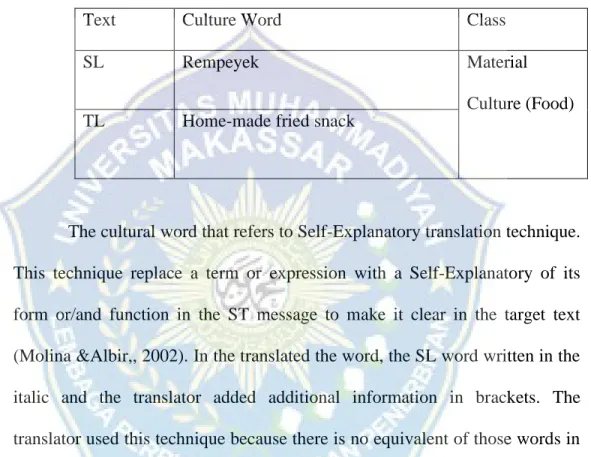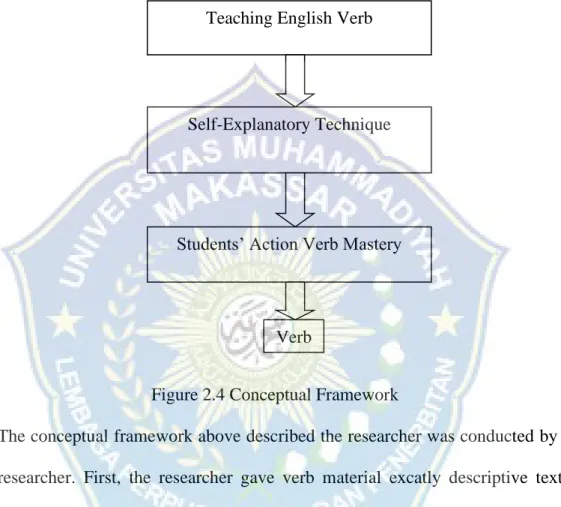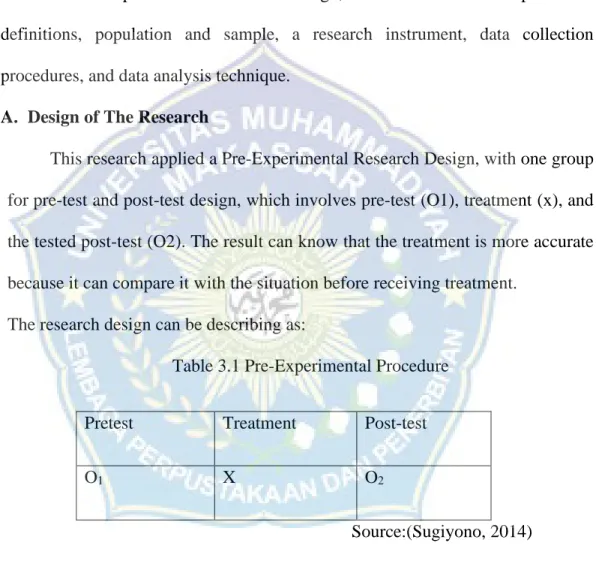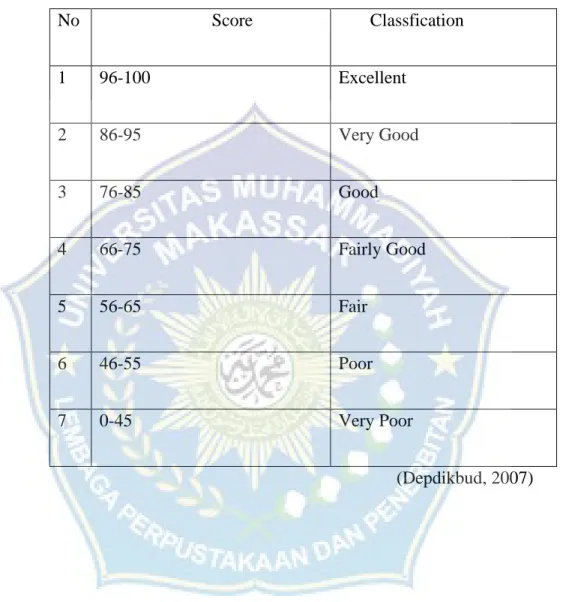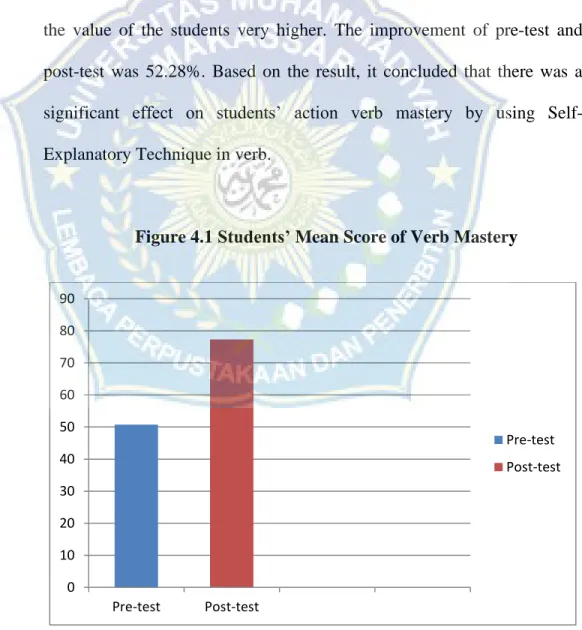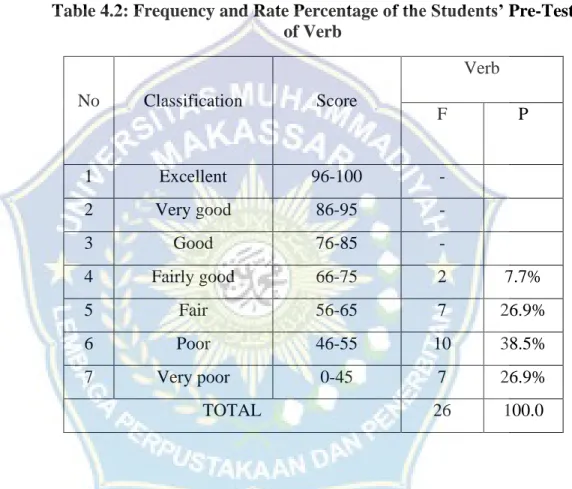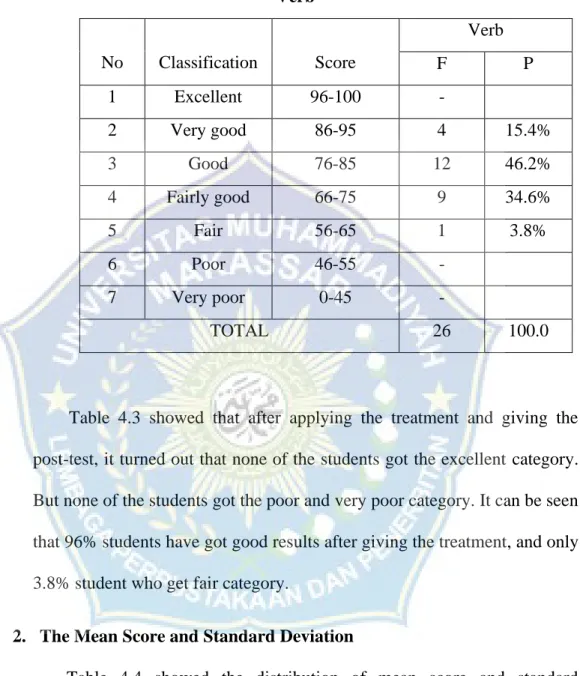The aim of this study was to obtain information on whether or not the use of the self-explanatory technique was effective in improving students' mastery of action verbs. The researcher's findings indicated that the improvement of the SMA Negeri 10 Maros freshmen improved after the implementation of the self-explanatory technique.
Background
The purpose of the above meaning of the action verb is a verb whose subject feels what is done. And in this research, the researcher uses the Self-Explanation technique to improve students' mastery of action verbs.
Research Problem
Objective of Study
Significance of the Study
In relation to the above explanation, the researcher is interested in conducting a study titled “Using Self-Explanation Technique for Student Improvement”. The result of this research is expected to be an alternative contribution to improving students' mastery of the action verb.
Scope of the Study
As an evaluation for the researcher and for the readers, this research can become a reference for making a research. This chapter discusses previous related research findings, the concept of action verb mastery, is self-explanatory and covers previous findings, some relevant ideas and a theoretical framework.
Previous of Related Studies
And the researcher concluded that in order to improve students' vocabulary, it is especially action verbs that need techniques, and memorization techniques can make students easily make sentences with their vocabulary. Himmawan (2013) used a classroom action research design with the aim of improving students' vocabulary using translation strategy.
Some Pertinent Ideas 1. Concept of Vocabulary
Concept of Verb a. Definition of Verb
In its simplest form, it connects the subject and the complement - that is, the words that follow the linking verb. Often what is on each side of the linking verb is equivalent; the complement redefines or re-expresses the subject. The verb 'to read' asks the question 'what is he reading?' – the answer is the subject).
The verb 'to smile' cannot have any object, as the action 'to smile' does not fall on anything/anyone). It is a form of the verb that takes place with or refers to the subject and uses one of twelve tenses and changes according to the number/person of the subject. Non-finite verbs do not change according to the number/person of the subject, because these verbs, also called verbs, have no direct relation to the subject.
Concept of Action Verb a. Definition of Action Verb
An action verb can be used in the present, past, or future tense: "The tiger is running very fast." An action verb can be used with auxiliary verbs: “Are you coming to football practice?”. Some examples of action verbs are: (Change, Melt, Grow, etc.). c) Momentary is a verb that indicates an event that lasts only a short time and is usually unplanned.
Examples of emotions are: (Love, Like, Dislike, Hate, etc.). b) Mental states is a verb that shows what the person is thinking. Some examples of stative verbs are: (to have, to possess, to possess, etc.). Sentence Example: Khuldi and Ujang have some apples in the bag. Examples of stative verbs are: (Bend, Charge, Weight, etc.). Sample Sentences: She owes me five thousand rupiah. Dia berhutang padaku lima ribu rupiah).
Concept of Action Verb Mastery
According to Hoed (2006), self-explanatory translation technique says by matching terms in the source language using a clearer self-explanatory of the target language. Self-explanatory technique replaces a term or expression with a self-explanatory form or function to make it clear in the target text. This technique is used if the translator cannot find the equivalent of the words in the target language.
Self-explanatory technique: This technique is applied when a source language has no equivalence in the target language. Based on the data, it speaks for itself, because the translator tries to provide additional explanations in the target language. This technique replaces a term or phrase with its self-explanatory form and/or function in the ST message to make it clear in the target text (Molina & Albir, 2002).
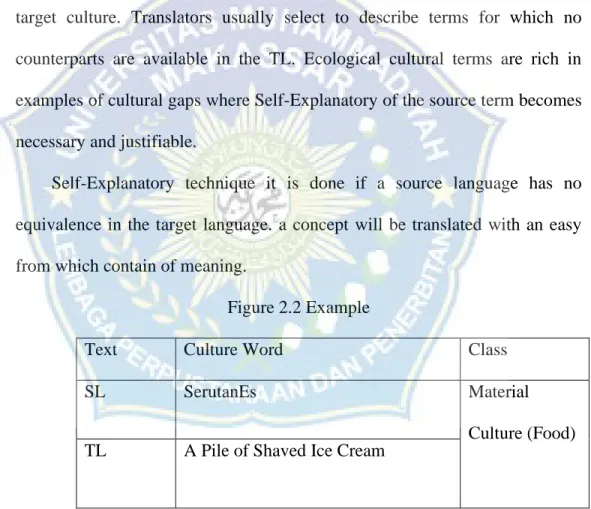
Conceptual Framework
Hypothesis
Design of The Research
In this research, the researcher found the improvement of using self-explanatory technique to improve students' vocabulary mastery of SMA Negeri 10 Maros.
Variable and Indicators 1. Variables
An independent variable is defined as the variable that is controlled or changed in a scientific experiment. When the experimenter changes the independent variable, the change in the dependent variable is observed and recorded. When you get data in an experiment, the dependent variable is the one that can be measured.
The population of this research was first-year students at SMA Negeri 10 Maros, which consisted of four classes; there are MIA 1, MIA 2, IIS 1, and IIS 2. In purposive sampling, the researcher handpicks the cases to be included in the sample based on their assessment of their typicality. In this study, the researcher was selected in one class in random sampling, the sample of this research was the first year students of SMA Negeri 10 Maros in class X MIA 1, consisting of 26 students.
Instrument of The Research
Technique of Data Collection
The students translate the text using the self-explanatory technique, as the researcher accompanied the students. The post-test used a test given to students after completion of a program or segment of instruction and is often used in conjunction with a pre-test to measure their achievement and effectiveness of the program. After the treatment, the researcher administered a post-test to the experimental class by distributing the same test.
Technique of Data Analysis
The students Action Verb Mastery
Self-explanatory technique class to improve students' mastery of action verbs, which was conducted in pretest, treatment and posttest during 5 meetings. The improvement of the mastery of the action verb by the students in the first pretest from the verb can be seen in table 4.1. Based on table 4.1 it can be seen that there is an improvement from pre-test and post-test, we can see from the table above that before giving the treatment, the students lacked, but after using the treatment, the post-test the value of students much more high.
Based on the result, it was concluded that there was a significant effect on students' action verb mastery by using Self-Explanatory Technique in verb. Based on the graph above shows that the mean score of pre-test in verb vocabulary is 50.76 and post-test 77.30. From the diagram above, it can be concluded that there is an improvement from pre-test to post-test after the use of Self-explanatory technique.

The Mean Score and Standard Deviation
It can be seen that 96% students achieved good results after giving the treatment, and only 3.8% students who get fair category.
Hypothesis Testing
This means that there is difference improvement between the students' action verb mastery of verb before and after implemented Self-explanatory technique. In other words, the use of Self-explanatory technique was affective in improving the students' action verb mastery.
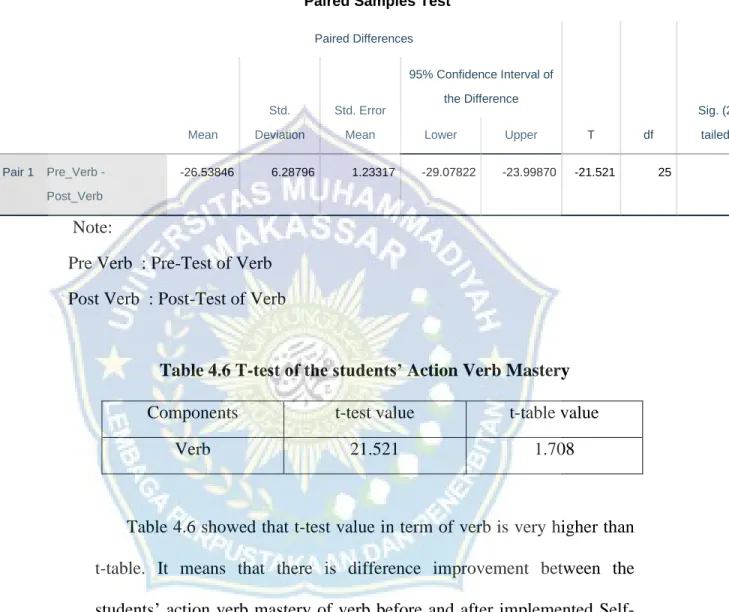
Discussion
It means that using this technique in teaching can improve students' vocabulary in mastering action verbs. He found that some types of correlation made by the first students who mastered the action verb in the argumentative text.student response mastery of the action verb in the use of the argumentative text still fail. He concluded that the mastery of the teaching and learning process of the action verb in the argumentative text can be increased.
From the discussion above, it can be concluded that the student action verb mastery can improve in the first year students of SMA Negeri 10 Maros after implementing Self-explanatory technique as treatment in learning. Based on discussion presented in previous chapter, the next conclusion was that it can be concluded that the use of Self-Explanatory Technique can improve the students' action verb mastery, especially in verbs in the tenth grade of SMA Negeri 10 Maros. The use of Self-explanatory technique improved the students' action verb mastery of verb after implementing Self-explanatory technique.
SUGGESTION
This was proven by the students' average score improvement from pre-test to post-test. It was shown that null hypothesis was rejected and alternative hypothesis was accepted. in the teaching of verb because it can improve the students' action verb mastery. The correlation between the students' mastery of action verb and students' production of argumentative text (a study of fourth students of IAIN Salatiga in the academic year of gay, L.R. Education Research: Competencies for Analysis and.
Improving students' vocabulary through grouping technique in the third year of SMPN 1 Ladong (A Classroom Action Research). The Effectiveness of Using Google Classroom to Teach Students' Vocabulary Mastery in Action Verb to Ninth Grade Students of MTs Al Mina Bandung in the Academic Year 2020/2021 Graduation Thesis. Correlation between students' vocabulary mastery and their ability in English to Indonesian text translation in SMA Negeri 1 TaneteRiaja. Unpublished MA Thesis in English Language Teaching.
KOMPETENSIDASAR
INDIKATOR
TUJUANPEMBELAJARAN
METODE
First, the teacher explains the method of the self-explanatory technique, and explains to the students how to use this method. Fourth, the teacher asks the students to translate the descriptive text by paying attention to the words in the descriptive text. Fifth, students are asked to read and pay attention to the verbs in the text.
Finally, after finding the verbs in the text, students are then asked to read out the results they worked on.
PENILAIAN
Nasi tumpeng adalah hidangan nasi kuning kukus berbentuk kerucut besar dengan lauk sayur dan daging, berasal dari masakan Jawa di Indonesia. Secara tradisional dilakukan dalam upacara keagamaan sebagai simbol ucapan syukur kepada dewa alam. Nasi tumpeng berasal dari tradisi Indonesia kuno yang memuja gunung sebagai tempat tinggal nenek moyang dan dewa. Nasi tumpeng melambangkan gunung suci. Hari raya ini sebagai bentuk syukuran atas hasil panen yang melimpah atau berkah lainnya. Dalam masyarakat saat ini, nasi tumpeng merupakan hidangan yang biasa disajikan di berbagai acara, bisnis swasta, dan organisasi lain yang menganut filosofi yang sama yaitu mengungkapkan rasa syukur. Pepes adalah masakan yang terbuat dari ikan yang dikukus dan diberi bumbu yang dibalut dengan daun pisang sebagai pembungkus makanan. Bungkusan daun pisang yang berisi makanan tersebut diikatkan pada sisi kiri dan kanan dengan menggunakan lidi (paku kecil dari tulang rusuk tengah daun kelapa). ). kemasan.
Teknik memasak seperti itu memungkinkan campuran bumbu yang kaya mengeras selama pemasakan dengan bahan utama dalam kemasan daun pisang individu, dan juga menambah aroma khas daun pisang matang atau panggang yang dimakan dan dibuang setelah dimasak. Taj Mahal atau Taj adalah objek arsitektur terkenal di India karena desain terbaiknya yang menggabungkan unsur gaya arsitektur India, Persia, dan Islam. Taj Mahal adalah makam sangat besar yang terbuat dari marmer putih gading.
Paired Samples Statistics
Paired Samples Correlations
Distribution of t-table
